R.J. Stowell's Blog: rjsomeone, page 30
February 25, 2020
Crosby, Stills & Nash and Déjà Vu
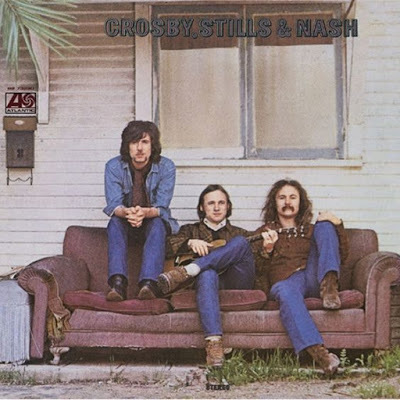 Crosby Stills and Nash (AM9): On one hand, it's exacting and rigorous - every aspect of the record compliments another in some holistic way. On the other, like a Monet, it's impressionistic - each song representing a shade, a sonic timbre that meshes and messes with each musical interpretation to present an erratic range of human emotions, effortlessly - "free and easy, the way it's supposed to be." "Suite: Judy Blue Eyes" stands unmatched in terms of expression. One can feel the helplessness in Still's voice when he pleads, "Can I tell it like it is, but listen to me baby- it's my heart that's a-suff'rin', it's a-dyin'." It's the foundation of "Helplessly Hoping," the most vocally moving piece, and comes to a climax on "49 Bye-Byes." Although it’s primarily a vocal LP, there is an incredible blend of musicianship and top-notch production.
Crosby Stills and Nash (AM9): On one hand, it's exacting and rigorous - every aspect of the record compliments another in some holistic way. On the other, like a Monet, it's impressionistic - each song representing a shade, a sonic timbre that meshes and messes with each musical interpretation to present an erratic range of human emotions, effortlessly - "free and easy, the way it's supposed to be." "Suite: Judy Blue Eyes" stands unmatched in terms of expression. One can feel the helplessness in Still's voice when he pleads, "Can I tell it like it is, but listen to me baby- it's my heart that's a-suff'rin', it's a-dyin'." It's the foundation of "Helplessly Hoping," the most vocally moving piece, and comes to a climax on "49 Bye-Byes." Although it’s primarily a vocal LP, there is an incredible blend of musicianship and top-notch production.Nash is Stills' lighthearted romantic equivalent. All of his tunes are delightfully simple but pure, a welcome break from Stills' intensity and Crosby's excess. "Marrakesh Express" and "Pre-Road Downs" are psychedelically tinged and "Lady of the Island" stirs up every desirous and wooing sentiment inside. It’s not that one of the triumvirate is more romantic than another. Instead it’s about how we each perceive romance in a different way.
Crosby's songs are more fanciful, the songs of a dreamer. Guinevere is about Joni Mitchell, but it's not; it's about Guinevere, it's about the ideal of womanhood through a man's eyes. It's old fashioned and whimsical. It's the folk rock/madrigal version of Burt Bacharach's "Wives and Lovers," as politically incorrect as the day is long, but a sentiment that harkens back to a simpler, more romantic time.
Ultimately, it doesn't matter who wrote what. What counts is that each artist shared a vision of earthiness, as evident as the LPs cover: three friends on an old coach.
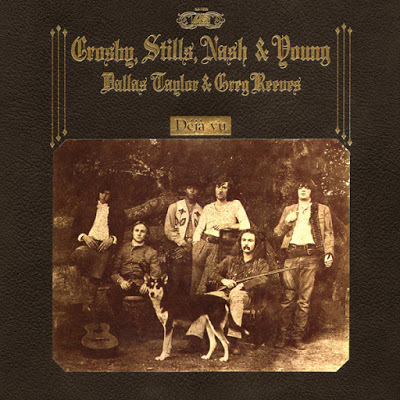 Déjà Vu (AM9): After the success of Crosby, Stills and Nash, the trio had to think about going on tour. To perform as a full electric band they needed, well, a band. In the end they chose to bring in Neil Young, who had played with Stills in Buffalo Springfield, and had recently started out on his own solo career. Now a quartet, they became Crosby, Stills, Nash & Young, with Dallas Taylor and Greg Reeves rounding out the players. Young's contract allowed him to continue with his solo career while he performed with the group, who went on tour in the summer of 1969 – and, of course, their second gig together was Woodstock.
Déjà Vu (AM9): After the success of Crosby, Stills and Nash, the trio had to think about going on tour. To perform as a full electric band they needed, well, a band. In the end they chose to bring in Neil Young, who had played with Stills in Buffalo Springfield, and had recently started out on his own solo career. Now a quartet, they became Crosby, Stills, Nash & Young, with Dallas Taylor and Greg Reeves rounding out the players. Young's contract allowed him to continue with his solo career while he performed with the group, who went on tour in the summer of 1969 – and, of course, their second gig together was Woodstock. With the addition of Young, Déjà Vu wasn't just part twoof the debut. The group broadened their palette, resulting in a more diverse collection of songs, if a less consistent effort because of it. More so than the first album it sounded like a collective of singer-songwriters rather than a band. Crosby and Nash's signature songwriting styles become more apparent, while Crosby contributes the solo hippie lament "Almost Cut My Hair" and the surreal, dream-like title track, whilst Nashcame up with the radio-friendly country-rock of "Teach Your Children" and the whimsical ode to domesticity of "Our House." Stills contributed the opener "Carry On", which defined the archetypal CSNY sound, and the quiet solo number "4+20," while Young wrote two songs, the slow, aching "Helpless" (which became one of his best-loved songs) and the three-part suite "Country Girl".
And yet, apart from his own songs, ol’ Neil doesn't sing anywhere else and adds guitar to just three others. He was always the outsider in the foursome and his presence on Déjà Vu is more as a guest guitarist who gets to sing his own songs; a bit closer to Taylor and Reeves than C, S & N, but this is picayune at best; Déjà Vu is one of the best LPs of the best era in rock, so it’s time for this critic to do what more critics ought to do, shut the hell up.
Published on February 25, 2020 14:14
February 23, 2020
Beatles - Discography - And in the end...
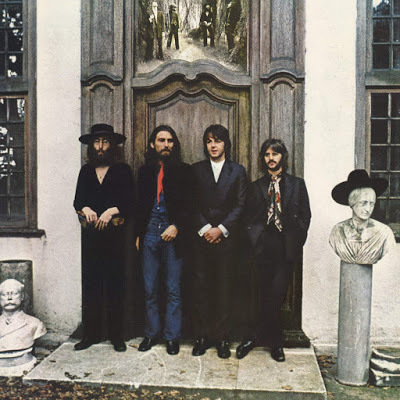
Many consider Rubber Soul to be the very first pop album, and by that I mean that each song was meant to be listened to, in order, with the album as a whole the focus rather than it being a collection of singles. Because of that, Rubber Soul is one of the most influential albums in music history; in particular, it is the album that inspired Brian Wilson to create his masterpiece Pet Sounds, Rolling Stone’s No. 2 album of all time.
Once again though, the British release of Rubber Soul was different from the one released by Capitol in the US. While I admire Capitol's reasoning for Meet the Beatles (all original material) and considerate it the better album over its British counterpart, I have mixed emotions about the differences in Rubber Soul.
Capitol's goal was to cash in on the acoustic folk craze in the U.S., and so they left off the songs "Drive My Car," an up-tempo rocker, the ballad, "Nowhere Man," "If I Needed Someone," and "What Goes On," replacing them with "I've Just Seen a Face" and "It's Only Love," from HELP! Both editions of the LP are stellar, and I go back and forth, leaning a little more to the American release, which will not be the case once we get to Revolver.
Before we do though, in America there was an album in-between called Yesterday and Today, which has four songs that weren"t on the American issue of Rubber Soul, three that won't be on Revolver when it’s released later in the year, two from HELP! and the singles, "We Can Work it Out" and "Day Tripper." There's nothing to compare it to in terms of a British equivalent, but it is an LP that truly stands on its own with songs like "I'm Only Sleeping," "Yesterday," "Nowhere Man" and "Drive My Car." The LP is famous for its "butcher cover," which we’ve covered before, making it one of the most valuable collectibles on vinyl.
 The Beatles responded to the Beach Boys' Pet Soundswith Revolver. There were 14 songs on the British addition and for the American release, all Capitol did was to remove those three songs that appear on Yesterday and Today. And while I'm a fan of "And Your Bird Can Sing" and "Dr. Robert," it’s the omission of "I’m Only Sleeping" that for me makes the British release far superior.
The Beatles responded to the Beach Boys' Pet Soundswith Revolver. There were 14 songs on the British addition and for the American release, all Capitol did was to remove those three songs that appear on Yesterday and Today. And while I'm a fan of "And Your Bird Can Sing" and "Dr. Robert," it’s the omission of "I’m Only Sleeping" that for me makes the British release far superior.Sgt. Pepper would be the very first Beatles LP to be a standard-issue for both the American and British audience, but that would not be the case for Magical Mystery Tour. The remainder of the British LPs would be identical to those released in the U.S. and include The White Album(officially called The Beatles), Yellow Submarine, Abbey Roadand Let It Be, but Capitol Records wasn't done cashing in on The Beatles, and so before the release of Let It Be came the album, Hey Jude, an LP that kind of collects everything that wasn't used already. There are two songs from A Hard Day's Night, the double-sided "Paperback Writer" and "Rain" single, the double-sided "Revolution" and "Hey Jude," the double-sided "Old Brown Shoe" with "The Ballad of John and Yoko," plus "Lady Madonna" and "Don’t Let Me Down." The LP has a stellar album cover and serves really as a survey of their career going all the way back to 1964. Keep in mind that with the exception of the songs from A Hard Day's Night, the rest of the LP is essentially all original material never before released on an album. The LP was originally titled The Beatles Again, but was changed last minute to promote the "Hey Jude" single. Collectors note: this is an inexpensive collectible (around $40). While it does not say The Beatles Again on the cover, it is written on the spine and on the label. One more note: the front cover was initially the back cover, once again swapped last minute.
Just three months later the last of the 11 British LPs, Let It Be, was released, a month after the Beatles had called it quits. On the back of the Let It Be cover you’ll find the words "This is a new phase BEATLES album," but of course, it wasn't.
Published on February 23, 2020 06:59
February 19, 2020
All Things... 50 Years On
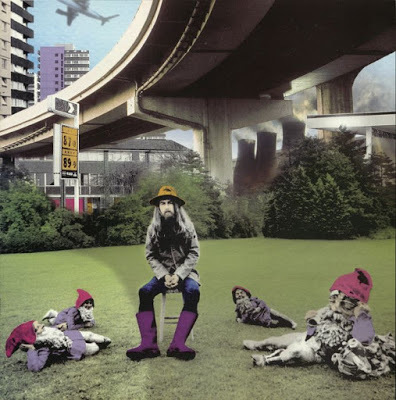 Harrison's triple album All Things Must Pass is a spiritual journey, touching on faith, death, life, love, evil. The first two LPs have nine tracks each, while the last record, sub-titled Apple Jam, has 5 sprawling tracks and features four jams with George and an assortment of illustrious buddies. Most of the songs are Harrison’s, the exceptions credited to Harrison/Dylan and Dylan.
Harrison's triple album All Things Must Pass is a spiritual journey, touching on faith, death, life, love, evil. The first two LPs have nine tracks each, while the last record, sub-titled Apple Jam, has 5 sprawling tracks and features four jams with George and an assortment of illustrious buddies. Most of the songs are Harrison’s, the exceptions credited to Harrison/Dylan and Dylan.Side one starts with the dreamy sounding “I’d Have You Anytime”. Then comes the well-known “My Sweet Lord”, followed by the lively, noisy rocker “Wah-Wah”. The lyrics don’t make much sense, but it’s fun nonetheless. “Isn’t it a Pity” has a fine sentimental, but a fitting end to a nearly perfect side. Side two starts in livelier fashion with the up-beat love song “What is Life”. In contrast, Dylan’s “If Not for You” is a gentle, sentimental declaration of love. “Behind That Locked Door” is another slow number with some admirable pedal steel guitar work from Pete Drake. “Let it Down” has a floating, meandering feel to much of it, but with a solid refrain, if off-kilter. “Run of the Mill”, which follows it, is equally strange. Not sure what George was trying to say.
Side three opens with “Beware of Darkness” – George warning us against dark thoughts and evil in general. Despite the dark subject matter it’s a pretty song. The joyful “Apple Scruff” has a light-hearted feel to it that brings back memories of some of George’s efforts in his Beatles days, while “Ballad of Sir Frankie Crisp (Let it Roll)” just has some weird lyrics. “Awaiting on You All” sees George intoning us all to chant the name of the Lord. Simple faith put to a catchy tune. The side ends with George in philosophical mood in “All Things Must Pass”. “Side four gets off to a shaky start in “I Dig Love” – easily the weakest track in the whole set. The up-beat “Art of Dying” finds George exploring the spiritual side of existence. Next up is a different version of “Isn’t it a pity”. This one benefits from being shorter than the former. “Hear me Lord” closes this part of the album with an impassioned plea that can touch even the heart of a skeptic.
With the spiritual journey at an end, and everyone suitably enlightened, the party – and the jamming - can begin. It gets off to a fairly low key start on side five with the longest of the pieces, “Out of the Blue”. The silly song “It’s Johnny’s Birthday” reminds us why we’re having a party before the jamming resumes – “Plug Me In” is much more likely to get us dancing. On side six, “I Remember Jeep” is another lively tune spoilt by too much messing with the synth. “Thanks for the Pepperoni” closes proceedings. Together with “Plug Me In” this is the best of the Apple jams. Together the last two sides don't last much more than 27 minutes. But by now you don't feel short-changed - you're just wondering if it's ever going to end!
Published on February 19, 2020 08:02
February 16, 2020
All Things Must Pass (AM10) 50 Years Ago
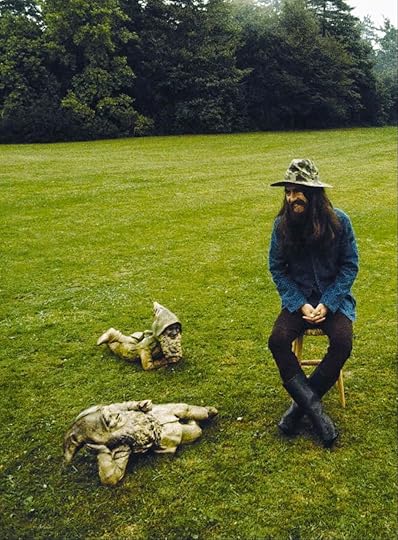 This is what happens after sublimating your creative impulses for seven years because you're in a band with songwriters named John and Paul. In All Things Must Pass George Harrison manages the improbable, merging spirituality with incredibly beautiful music to create rock history. Normally, religious converts sound contrived or corny when singing of their convictions, but Harrison (a converted Hindu of Hare Krishna denomination) comes across as genuine and inspired by his faith, and the songs are so strong they could have stood out on any Beatles album. Pop melodies don't get better than this.
This is what happens after sublimating your creative impulses for seven years because you're in a band with songwriters named John and Paul. In All Things Must Pass George Harrison manages the improbable, merging spirituality with incredibly beautiful music to create rock history. Normally, religious converts sound contrived or corny when singing of their convictions, but Harrison (a converted Hindu of Hare Krishna denomination) comes across as genuine and inspired by his faith, and the songs are so strong they could have stood out on any Beatles album. Pop melodies don't get better than this.Though released in 1970, this was the work (Harrison’s third solo effort) that the otherBeatle had been contemplating since Revolver. What easily strikes the listener today, aside from the signature slide work and how well Phil Spector's Wall of Sound fits Harrison's vision, are the friends "sitting in": Eric Clapton, Billy Preston, Gary Brooker, Ringo Starr, Alan White, Ginger Baker, Phil Collins, and Dave Mason, to say nothing of the guys who joined Clapton to become Derek and the Dominoes. It's an album poised not only to announce how much talent Harrison has, but to promote the idea of session men and great collaborators recording album after album together, a concept that would be the catalyst for Steely Dan. Harrison leads off the album with a collaboration with Bob Dylan, and that sets the tone for major guest stars. Along the way, the album establishes what might be called a "late Beatles" sound, since Let It Be was also produced, very controversially, by Spector, as was Lennon's "Instant Karma."

The LP is committed—as Harrison songs tended to be at the time—to philosophical reflection on how things change, whether bad or good; that nothing, either way, remains the same. The title song, like Percy Shelley's "Ozymandias" sums up the ideology. "Sunrise doesn't last all morning / A cloudburst doesn't last all day / Seems my love is up and has left you with no warning / It’s not always going to be this gray." The point is that change is good, even if you'd rather live in a perpetual sunrise. The line about "my love" — getting up early and hitting the road unexpectedly — personalizes the hallmark nature of these reflections. While one ponders how impermanent conditions can be, add this, to the mix that might just up and go. Love. And life.
Just an aside for die-hard Harrison fans: The song title "Wah-Wah" is a play on words mixing the nickname for the guitar gizmo with the same-sounding Indian word that means "bravo" (in the context of classical Indian concerts). The expression is shouted by the audience during Indian concerts after particularly complex melodies or a clever wordplay to express the audience's enthusiasm or awe. Thus, "You've given me a wah-wah" actually means "you've cheered me on."
All things said, All Things Must Pass is a desert island disc, and gets an AM10 by default, referring specifically to the "song part" of the album. Those never-ending jams by disc 3 are for Harrison purists, but there's enough left over for nearly two albums, thus the default. All Things Must Pass is a gift from Saraswati, the Hindu God of Knowledge, Music, Arts, Wisdom and Learning. Wah-Wah!
The Clapton Connection - In the late 60s, the Beatles and Eric Clapton kicked off a nearly five-decade-long tradition of recorded collaborations. Sure, "While My Guitar Gently Weeps" — the only official EMI Beatles recording Clapton ever played on — is an undisputed highlight, but Slowhand's fretwork also graces recordings by all four solo Beatles. In fact, the former Yardbird and Bluesbreaker is the only guitarist—ever—to play on a Beatles song and on official studio recordings by John Lennon, Paul McCartney, George Harrison and Ringo Starr.
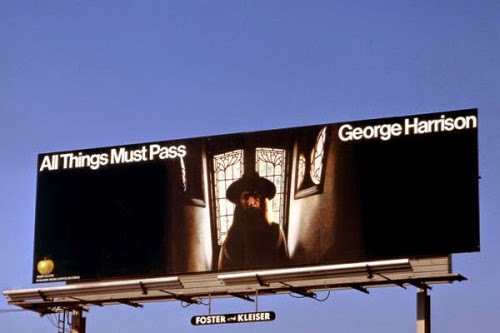
Daylight is good at arriving at the right time...

Published on February 16, 2020 14:29
February 7, 2020
That's When Van Morrison Walked Through the Door - Miles From Nowhere
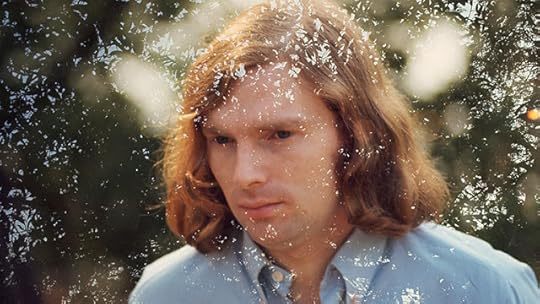 The big Irishman looked like someone who could get pissed off really quick, but I don’t know, I didn’t talk to him. Chadwick said he was a pretty normal guy, he just drank too much.
The big Irishman looked like someone who could get pissed off really quick, but I don’t know, I didn’t talk to him. Chadwick said he was a pretty normal guy, he just drank too much. His set was a collection of tight, radio-friendly soul with a cracker-jack, spot-on band. He did songs I wouldn’t call hits, but I’d heard them on the radio: “Moondance” and “Domino” and “Brown-Eyed Girl.” The best song was a killer track called “Into the Mystic.” “Born before the wind,” he sang, “oh so younger than the sun.” Then he sailed his “bonny boat” into this sublime metaphysical harbor. It was pretty Irish, let me tell you.
The set was top-notch, and although it didn’t resonate with me the way that Cat Stevens or Neil Young did, I’d remember that night for the rest of my life, mostly because of the scar I’d wear over my eye. It was tiny, but a battle scar nonetheless. I’m kind of proud of it.
It was during a lengthy jam that a beer bottle flew from out of the audience. It careened rather harmlessly off an amp and onto the floor, but the guitar player flew into the audience. I figure he saw who threw it and his Irish temper and the alcohol got to him. The two of them faced off until the guitarist caught him with an elbow, and down the guy went. It would have ended there, but people intervene, it’s what they do, and a brawny guy who looked like a troll with a big head and big hands smacked the guitarist in the face and laid him flat. Then it was Van’s turn; he was bigger than everybody and soon there was a regular drunken brawl.
It was then I got hit in the forehead with a Coors bottle; there was shit flying everywhere. When the police came, there were guys slugging it out on the sidewalk, a real Moondance, and a marvelous night for it. There were half a dozen cop cars and twice as many brawlers in handcuffs when it was over. I saw Van Morrison and the band hightail it out the back.
To say the least, there was a bit more cleanup than usual. The bartender bandaged my head. She said I’d probably need stitches, but I declined, and as she bandaged me up, I got a pretty nice glance down her top. Chadwick would have been proud; you know, in the face of adversity and all.
Despite the fracas, there wasn’t anything really in the way of damage, just broken bottles and a real mess. It took us most of the night to get things back to Chadwick’s specs. He said, “Now you got somethin’ to write about.”
Published on February 07, 2020 14:20
Blowin' Your Mind on TB Sheets - Van Morrison and the Astral Weeks
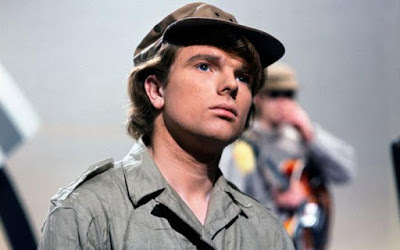 I was never a Van Morrison fan. I should be, it only fits, but oddly, the first single I ever bought with my own money was Them's "Here Comes the Night." I was under the impression when I went to the record store with my Grandmother that I was after The Rolling Stones. (I was like five, what do you want?) While it remained in the stack of singles on my 45 turntable as a part of my go-to collection, I subsequently proceeded to forget about it, only rediscovering the tune with Bowie's frightening cover on 1973's Pin-ups LP.
I was never a Van Morrison fan. I should be, it only fits, but oddly, the first single I ever bought with my own money was Them's "Here Comes the Night." I was under the impression when I went to the record store with my Grandmother that I was after The Rolling Stones. (I was like five, what do you want?) While it remained in the stack of singles on my 45 turntable as a part of my go-to collection, I subsequently proceeded to forget about it, only rediscovering the tune with Bowie's frightening cover on 1973's Pin-ups LP. My brother bought Morrison's debut LP, Blowin' Your Mind, and unlike the brunt of his collection, I played Side One once and put it back on the shelf. He'd storm into my room looking for The Moody Blues, The Mothers, even Switched On Bach, but never once did he have to seek out Blowin' Your Mind. (Interestingly, Van Morrison doesn't consider this LP among his canon of music; Bert Berns, the LPs producer, released it without Morrison's consent or input.) I found it the other day in the budget section of a record shop, and I figure now that maybe the six year old me was wrong, at least to a degree. Still not a "Brown-eyed Girl" fan (nor do I take to "Domino," Morrison’s biggest hit), the remainder of Side One is stellar insightful blues with unmatched session players who wouldn't play second fiddle to The Wrecking Crew (Eric Gale, Al Gorgoni, and Hugh McCracken lay down what are quite possibly the best rhythm guitar tracks ever! Russ Savakus played bass, Paul Griffin played piano, and Gary Chester, drums. Those heavenly back-up singers were The Sweet Inspirations, made up of Myrna Smith, Estelle Brown, Sylvia Shemwell, and Cissy Houston, mother of Whitney and Dionne Warwick's aunt.
My brother bought Morrison's debut LP, Blowin' Your Mind, and unlike the brunt of his collection, I played Side One once and put it back on the shelf. He'd storm into my room looking for The Moody Blues, The Mothers, even Switched On Bach, but never once did he have to seek out Blowin' Your Mind. (Interestingly, Van Morrison doesn't consider this LP among his canon of music; Bert Berns, the LPs producer, released it without Morrison's consent or input.) I found it the other day in the budget section of a record shop, and I figure now that maybe the six year old me was wrong, at least to a degree. Still not a "Brown-eyed Girl" fan (nor do I take to "Domino," Morrison’s biggest hit), the remainder of Side One is stellar insightful blues with unmatched session players who wouldn't play second fiddle to The Wrecking Crew (Eric Gale, Al Gorgoni, and Hugh McCracken lay down what are quite possibly the best rhythm guitar tracks ever! Russ Savakus played bass, Paul Griffin played piano, and Gary Chester, drums. Those heavenly back-up singers were The Sweet Inspirations, made up of Myrna Smith, Estelle Brown, Sylvia Shemwell, and Cissy Houston, mother of Whitney and Dionne Warwick's aunt.In particular is the epic "TB Sheets." It's the tale of a man stuck in the room of a dying friend "And I can almost smell your TB Sheets," he sings, and sniffs the air "on your sick-bed." At more than nine-and-a-half minutes, it is a song that doesn't so much play as ooze, that winds you up in a feverish, Otis Redding-style delirium, with a groggy-sounding organ, a raving harmonica and a tambourine that sounds like a rattlesnake. Lester Bangs (you know I'm not much of a fan) said, "In TB Sheets, his last extended narrative before making Astral Weeks, Van Morrison watched a girl he loved die of tuberculosis. The song was claustrophobic, suffocating, monstrously powerful 'innuendos, inadequacies, an' foreign bodies'."
 On symbolism, the unparalleled Irish poet, William Butler Yeats said, "The purpose of rhythm, it has always seemed to me … is to prolong the moment of contemplation … by hushing it with an alluring monotony." (Hold on to that notion...)
On symbolism, the unparalleled Irish poet, William Butler Yeats said, "The purpose of rhythm, it has always seemed to me … is to prolong the moment of contemplation … by hushing it with an alluring monotony." (Hold on to that notion...)I'm thinking back to my youth, sneaking into my brother's room to snag Blowin' Your Mind. It was the fall of 1967, a rainy day in L.A., and two songs into Side One an eerie dirge about death and disease spun cheerlessly on the hi-fi. "T.B. Sheets" was hypnotic blues sung from the point of view of a young man spooked by his lover wasting away from tuberculosis. Modern in sound, it looked backward for content, mining a centuries-old motif that by the mid-60s was fading from historical reality – the dying loved one, stricken with incurable, infectious disease, and the accompanying bedside vigil (today we'd merely look back to the AIDS pandemic).
This it did with harrowing intensity. Countless songs, books, and films tell of lovers parted by premature death and the attendant sorrow of partners left behind, but "T.B. Sheets" stands out for its oppressive ambiance and the inner turmoil of its anguished yet unheroic protagonist. Dying lover narratives often portray surviving partners as heartbroken paragons, steadfast and true, but Morrison’s narrator is all too shamefully human: unable to cope with his lover's illness and approaching death, he comforts himself with false promises and abandons her. Woah.
"Now listen, Julie baby
It ain’t natural for you to cry in the midnight
It ain’t natural for you to cry way in the midnight through
Into the wee small hours long before the break of dawn
Oh Lord"
Pretty Yeatsean, eh?
Tucked halfway through an LP that opened with the jaunty "Brown-Eyed Girl" – one of the era's sunniest songs and a hit single the previous spring – "T.B. Sheets" no doubt shocked listeners expecting an album's worth of "Sha-la-la, la-la, la-la, la-la, l'la-te-da." Harrowing and hopeless, the song's stark realism rested uneasily next to groovier fare in the season of Sgt. Pepper. Only the Doors’ gloomy debut and the little-noticed (at the time) Velvet Underground & Nico were on a similar wavelength. I find myself a little like Lester Bangs here; I was wrong.
With a debut that rivaled the songwriting of Bob Dylan, one would think the next offering would simply produce itself. It did not. Contractual disputes with Bang Records following the label's founder's death barred Morrison from entering the studio, though he was still under contract, and that conflict kept club and venue owners from booking the band. Crazy that we almost didn't get Astral Weeks.
My wife and I only recently returned home from Ireland. Imagine a day trip on a bus to the Giant's Causeway and then deep into the real Ireland. After an eye-opening tour of "The Troubles" that was immensely disturbing and downright frightening, you head off to the gorgeous northern coast. It's a nice, sunny, cool afternoon. We stopped off at a pub in an out-of-the-way town for a late, leisurely lunch. There's a stage in the corner with no one playing, but in the background is Astral Weeks. We're lulled into a tranquil mood by the beautiful, soulful, melodious songs like we'd never heard them before. The songs aren't "polished" in the usual sense, and sound almost improvised; the lyrics vague and abstract. Lunch over, you climb back on the bus and head home. The moment is over but the effect leaves an ethereal, warm memory and a happy glow from the beautiful moment in time and space you've just witnessed.
Published on February 07, 2020 14:15
February 5, 2020
February 4, 2020
Buy The Book

Read the Book! AM, here on the web and on the radio, is sponsored by your patronage through the sale of R.J. Stowell's novel, Miles From Nowhere (and from Jay and the Americans). We've arranged for you to read Miles on Kindle Unlimited FREE, while the Kindle edition for those of you without KU is just $2.99.
And here's a new offer for a limited time only. Now you can get a personally signed edition of either novel for just $9.99 (plus $2.00 shipping). I will sign the novel to you or a loved one with a personal note. Send an email to this link:
rjsomeone@gmail.com
Some of you emailed me about the cover art for Miles. I created the cover with a pen and ink drawing of the landscape. From there, I cartoonized a photo of a VW van and superimposed the peace symbol for the Kindle edition. For the trade paperback, I utilized the cartoon version of the van and created an ink drawing adding watercolor. I scanned the artwork and on the computer added the sun and its rays in the distance. I felt it was important to be hands-on with the cover as well as what was inside. It's the same approach I took with my first published novel, Jay and the Americans, also available from Amazon.

Published on February 04, 2020 04:16
February 3, 2020
Deep Purple In Rock - 50 Years Ago
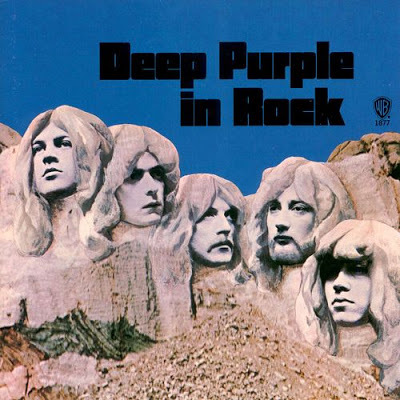 Deep Purple In Rock (AM7)Artist: Deep PurpleProducer: Deep PurpleLength: 43:30Released: June 3, 1970Tracks: 1) Speed King (5:52); 2) Bloodsucker (4:16); 3) Child in Time (10:18); 4) Flight of the Rat (7:53); 5) Into the Fire (3:30); 6) Living Wreck (4:31); 7) Hard Lovin´ Man (7:11)
Deep Purple In Rock (AM7)Artist: Deep PurpleProducer: Deep PurpleLength: 43:30Released: June 3, 1970Tracks: 1) Speed King (5:52); 2) Bloodsucker (4:16); 3) Child in Time (10:18); 4) Flight of the Rat (7:53); 5) Into the Fire (3:30); 6) Living Wreck (4:31); 7) Hard Lovin´ Man (7:11)Players: Ritchie Blackmore – guitar; Jon Lord – keyboards, organ; Ian Paice – drums, percussion; Ian Gillan – lead vocals; Roger Glover – bass
Often overlooked on the scene, despite several rounds of success, particularly in the U.S., Deep Purple began their long career as Roundabout. The idea, from former Searchers' drummer Chris Curtis, was to create a supergroup, centered on himself, in which other members would come and go, a process that would be key to the success of bands like King Crimson and later, Steely Dan. By 1968, the idea had flourished with a bevy of activity that included three studio LPs in the course of the year. Curtis would drift away, along with his idea, when Deep Purple, the band name adopted in 1968, signaled the demise of Roundabout. It was at that time that the band found pop success with the release of the top ten "Hush." DP fans refer to this line-up as Mark I, with the band taking a definitive pop stance.
Mark II was the band's most psychedelic venture, featuring core members Ritchie Blackmore, Ian Paice, and Jon Lord, though they still hadn't really found its voice (literally and figuratively). With the demise of their initial U.S. record label, Tetragramatton, the band was at a breaking point. It was then, and maybe due to the band's misfortune, that Blackmore and Lord approached Paice with the idea of taking on a heavier sound. Blackmore has said that the band wanted to be a Vanilla Fudge clone. Early in 1969, Blackmore recruited Ian Gillian as Deep Purple's frontman, along with bassist, Roger Glover. And then a break came in September 1969 with Lord's Concerto for Group and Orchestra, a three-movement piece the band played at the Royal Albert Hall. Alongside Days of Future Passed and The Nice's Five Bridges, it was instrumental (forgive the pun) in rock orchestration. The LP charted in Britain for Deep Purple's first real taste of success in their homeland.
Then, of course, came their watershed moment, Deep Purple In Rock. In singer Ian Gillan, the band had found a charismatic and powerful vocalist who could go the distance with Glover who brought his songwriting skills to form on songs like "Speed King," the epic "Child In Time" and the monumentally heavy "Into The Fire." It was this lineup that brought a sense of almost classical level musicianship and a relentless need for speed to hard rock – pretty good street cred.
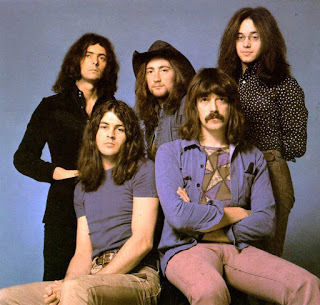 Recorded in October 1969 and released June 3, 1970, In Rock was recorded in three separate studios across London. Opening track, "Speed King," began life as "Kneel and Pray" having been in the live set for months before it was attempted in a studio setting. The initial idea had come from Glover and was based on a riff he had similar to "Fire" by Jimi Hendrix. Musically the interplay between Blackmore and Lord in the middle part of the song sets the standard for the next four or five years and Gillan's vocal shows off one of metal's greatest vocalists. "Bloodsucker" is a slower but even heavier track. Lord's brief organ solo giving the song the light it needs before Blackmore riffs the track out.
Recorded in October 1969 and released June 3, 1970, In Rock was recorded in three separate studios across London. Opening track, "Speed King," began life as "Kneel and Pray" having been in the live set for months before it was attempted in a studio setting. The initial idea had come from Glover and was based on a riff he had similar to "Fire" by Jimi Hendrix. Musically the interplay between Blackmore and Lord in the middle part of the song sets the standard for the next four or five years and Gillan's vocal shows off one of metal's greatest vocalists. "Bloodsucker" is a slower but even heavier track. Lord's brief organ solo giving the song the light it needs before Blackmore riffs the track out. "Child in Time" is, of course,e one the greatest studio recording of all time (and indeed, the Made in Japan version later on, is among the most iconic live performances). Gillan displays every vocal quality he has from the gentle delivery of the lyric to the unbelievable power of his screams. The solos and musical passages are sublime. I still get a chill every time Blackmore launches into his solo and then into the almost machine gun like frenzy that follows. Oddly, Ian Gillan has never been fond of the track and referred to his contribution as "yelling over a racket."
"Flight of the Rat" develops into another frenzied jam with a counterpoint vocal from Gillan with a gentler approach (one of the talents that would make his contribution to Jesus Christ Superstar the following year so stellar). The shortest track on the album, "Into The Fire" was in the live set with Ian Gillan introducing it as "rock and roll with its trousers down and back to front." While "Living Wreck" features some nice swirling organ from Lord and a slower solo from Blackmore, it is the LP's weakest track. "Hard lovin Man" was recorded January 1, 1970, so it's fitting that the track foreshadows the sound of the Deep Purple of the seventies. Another lengthy workout with lots of intricacies and solos for both Lord and Blackmore, it begins with what was to become a trademark Paice opening drum beat. The mayhem at the end of the track is a perfect ending to an album that heralded the arrival of heavy metal.
Published on February 03, 2020 05:00
Tomorrow and Tomorrow and Tomorrow, Creeps in this petty pace from day to day...
 ...And so it was for rock 'n' roll in the mid-60s: malingering, strolling casually down Tin Pan Alley. In '65 we'd gone wild with Freddie and the Dreamers and Herman's Hermits (let your freak flag fly!), and then, bam, like a supernova, a bi-polar onslaught of MC5 and Moby Grape, of 13th Floor Elevators and Zombies. Out of this schizoid cavalcade came King Crimson like lab-quality LSD25, and despite the advent of metal and psychedelia, the critics were left to ponder, "Where the fuck did that come from?"
...And so it was for rock 'n' roll in the mid-60s: malingering, strolling casually down Tin Pan Alley. In '65 we'd gone wild with Freddie and the Dreamers and Herman's Hermits (let your freak flag fly!), and then, bam, like a supernova, a bi-polar onslaught of MC5 and Moby Grape, of 13th Floor Elevators and Zombies. Out of this schizoid cavalcade came King Crimson like lab-quality LSD25, and despite the advent of metal and psychedelia, the critics were left to ponder, "Where the fuck did that come from?" King Crimson formed in 1968 with former band members of Giles, Giles and Fripp: Robert Fripp (guitar), Michael Giles (drums) and Peter Giles (bass), plus Greg Lake (vocals), Ian McDonald (winds, vibes) and Pete Sinfield (lyrics and light show). From its formative years in Bournemouth, England, King Crimson's guiding force has constantly been Fripp who attributes the band's longevity to the "collective brilliance of its individual members." Fripp bfirst picked up the guitar at the age of eleven. By 18 he was playing bar-mitzvahs and weddings with a band in Bournemouth. While early influences included Bartok and Debussy and Django Reinhardt and Hendrix, Fripp was particularly drawn to The Beatles' "A Day In The Life," which he claimed affected him in the same manner as classical compositions and free form jazz. The Cheerful Insanity of Giles Giles & Fripp was released on Deram Records in September 1968. Despite the humorous folky musings and jazzy guitar riffs by Fripp, sales were dismal. It was then that Fripp and the Giles brothers evolved into King Crimson; playing their first gig at London's Speakeasy in April '69. The following week the band began a three month Sunday residency at the Marquee Club, overwhelming London's already avant-garde music scene with an impressive mix of rock, jazz and classical music. The acid test was Crimson's performance at The Rolling Stones' free concert in Hyde Park in front of half a million of London's hippest folks. KC's impact was immeasurable, with Jimi Hendrix shaking Fripp's hand and heavy hitting record companies vying for contracts, with Island Records in the UK and Atlantic in North America emerging as victors.

King Crimson's legendary debut album, In the Court of the Crimson King, remains the most influential progressive album in rock history and one of the most innovative and creative works ever recorded. Pete Townsend of The Who described it as an "uncanny masterpiece." Adorned with ominous neo-gothic gatefold artwork by Barry Godber, a friend of Pete Sinfield's, it would become one of the most recognizable LP covers. Tragically Godber would die of a heart attack in February of 1970 at the age of 24. The music, with its portentous lyrics, spacious Mellotron passages and futuristic angular guitar lines had a dark, orchestral sound. Tranquil ethereal atmospheres with baroque touches were interspersed with dramatic crescendos and psychotic be-bop, particularly on opening track, "21st Century Schizoid Man," highlighting the band's musical prowess. The piece would become the band's trademark over the next few years and conjured up enough doom, gloom and confusion to rival any prototypical metal band of the day. In November 1969, In The Court Of The Crimson King hit number 5 in the UK and the band embarked on a tour of the United States to support its release on Atlantic Records. The 20 gig tour opened at Goddard College in Vermont and included Boston, Detroit, New York, Palm Beach, a sold out five night stint at the Whiskey-a-Go-Go and three nights at the Fillmore.
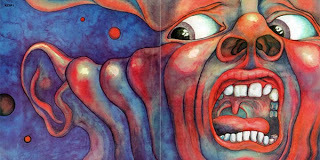 In the Court of the Crimson King
(AM9)
In the Court of the Crimson King
(AM9) Artist: King Crimson
Producer: KC
Length: 43:53
Released: October 10, 1969
Tracks: 1) 21st Century Schizoid Man (7:24) 2) I Talk to the Wind (6:04) 3) Epitaph (8:49); 4) Moonchild (12:13) 5) The Court of the Crimson King (9:26)
Personnel: Bass, Lead Vocals – Greg Lake; Drums, Percussion, Vocals – Michael Giles; Guitar – Robert Fripp; Keyboards, Mellotron, Woodwind, Vibraphone, Reeds – Ian McDonald; Lyrics, Other [Illumination] – Peter Sinfield
In the Court of the Crimson King is powerfully dark, unwaveringly ambitious, and fearlessly experimental. The much-maligned Mellotron was never utilized as deftly before or since, nor have tender balladry, symphonic dirge and ferocious jazz-metal worked so well together on any other album. The overwhelming power of "21st Century Schizoid Man" took 1969 by surprise, and its instrumental ferocity, compositional obliquity and KC’s stunning musical chops – Fripp's roaring guitar, McDonald's piercing sax, Giles' drum demolishment and Lake's unsubmissive bass and ghostly vocals – are still capable of making 1st time listeners drool, or they should. It's kind of like reading Shakespeare, you get revelation after revelation: "Wow, that's where it first came from." In the Court of the Crimson King takes every stereotype and joke about prog rock and confounds, defies, and destroys them. Doesn't rock hard enough? Bollocks. Aimless? If only all rock albums were this focused. Too pretentious? That's pretty much this album's greatest strength - without that pretention and ambition, it wouldn't have been such a seismic release. In the Court of the Crimson King owns its hefty reputation because it's brilliant. It's a-okay here to be Catherine Obvious; it's honestly as simple as that. "Epitaph" is one of man's greatest musical achievements (maybe that's the booze talking). Still, based on its feet-wet experimentation and an inability to edit itself, the Crimson King is but an AM9.
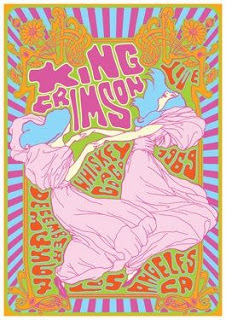 Live at the Whiskey-a-Go-Go
Live at the Whiskey-a-Go-GoDespite the enthusiastic reception the band received in America, Michael Giles and Ian McDonald quit the band citing the rigors of touring and Fripp's heavy-handedness. This development left the future of King Crimson in doubt amidst rumors that Fripp was going to replace Peter Banks in Yes. Greg Lake also had reservations and had discussed the possibility of forming a band with Keith Emerson (the two met backstage at the Fillmore in San Francisco). Nonetheless, Lake stayed aboard long enough for the 2nd outing. Over the next few months other musicians were recruited as "guests," most notably jazz pianist, Keith Tippett and session man, Mel Collins, on woodwinds, with Peter Giles returning to lay down bass. In March 1970 a crazed, left of center single was released entitled "Cat Food," on which Tippett's jazz finagling combined with Lake's evocative vocals culling one of the most extreme singles ever to hit the airwaves. In The Wake Of Poseidon followed in May sounding notoriously like its predecessor with neo-classical styling, sweeping Mellotrons (now formidably handled by Fripp) as well as a "21st Century Schizoid Man" doppelganger, "Pictures Of A City."
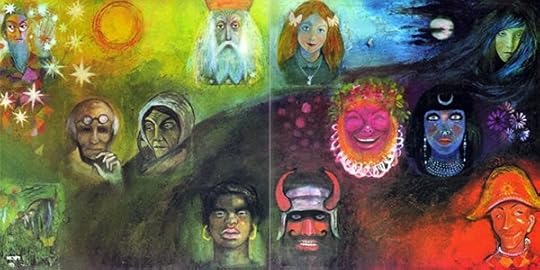 In the Wake of Poseidon
(AM8)
In the Wake of Poseidon
(AM8) Artist: King Crimson
Producer: Fripp, Sinfield
Length: 41:02
Released: May 15, 1970
Tracks: 1) Peace, A Beginning (:51) 2) Pictures of a City (7:57) 3) Cadence and Cascade (4:35); 4) In the Wake of Poseidon (8:24) 5) Peace, A Theme (1:15) 6) Cat Food (4:52) 7) The Devil's Triangle (11:30); 8) Peace, An End (1:54)
Personnel: Lead Vocals (except 3) - Greg Lake; Drums, Percussion, Vocals - Michael Giles; Guitar, Celesta, Mellotron - Robert Fripp; Woodwinds, Flute - Mel Collins; Words, Production - Pete Sinfield; Bass - Peter Giles; Piano - Keith Tippet
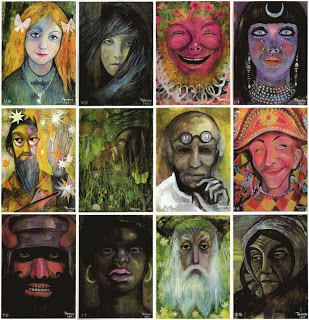 On a personal note, if I'd heard In the Court of the Crimson King before In the Wake of Poseidon, who knows what would have been the outcome? Here the AM rubric fails a bit. This was exciting stuff; certainly it was exciting to me. It was '74 by the time I'd picked up KC, thoroughly immersed in Yes and Tull, and singing like Jon Anderson in a high school band. But Poseidon raised the bar. In retrospect there's an obvious link between the first two Crimson albums, the first serving as template; however, Fripp & Co. set out to make an even more advanced album in the second round, despite the break-up of the band; Poseidon shouldn't even have happened.
On a personal note, if I'd heard In the Court of the Crimson King before In the Wake of Poseidon, who knows what would have been the outcome? Here the AM rubric fails a bit. This was exciting stuff; certainly it was exciting to me. It was '74 by the time I'd picked up KC, thoroughly immersed in Yes and Tull, and singing like Jon Anderson in a high school band. But Poseidon raised the bar. In retrospect there's an obvious link between the first two Crimson albums, the first serving as template; however, Fripp & Co. set out to make an even more advanced album in the second round, despite the break-up of the band; Poseidon shouldn't even have happened. The opening, "Peace - A Beginning," has Lake in an enigmatic cavern, chanting an ethereal pastiche. "Pictures of a City" crashes in like thinking man's metal with medieval nodes and a jazz structure far more sophisticated than anything on Court. The piece does indeed bear strong relation to "21st Century Schizoid Man," but a clone? No way. Nothing as complex and demanding as this could be seen as part of a formula. "Cadence & Cascade" as "I Talk to the Wind 2.0?" Again, nearly, yet more sophisticated. This is an adult ballad, a summery-yet-melancholy love-song. Beautiful. The title track has echoes of "Epitaph" but its lyrical cleverness lends it credibility. The rest of the album holds its own, moves on, exemplifies: "Peace (A Theme)" shows just how good Fripp was as an acoustic minstrel; the hilarious and jazzy "Cat Food" is "Moonchild" plus; and "Peace (An End)" wraps it up in emotive style. "Peace is the end, like death of the war" - lump in throat time. Advice: listen to Wake as if Court didn't exist. It's the better of the two and yet an AM8 (the rubric and the rules to blame).
The composite above reflects the 12 Faces of Humankind (from left to right): The Child (Water and Air): A picture of innocence; a girl with delicate sweet smile and butterfly shaped bows at each side in her long golden hair. She wears a gold chain, on the end of which is a small golden key. The Enchantress (Water and Earth): A sad girl with watery eyes; The Fool (Fire and Water): A laughing man with a wispy beard. The Actress (Water and Fire): An Egyptian girl with long pearl earrings and many pearl necklaces around her neck, she has tears in her eyes; The Logician (Air and Fire): A scientist or wizard with a long face, dark hair and long dark holding a wand with his right hand and his left is held aloft and surrounded by stars. Mother Nature (Earth and Water): Lying asleep in the long grass; The Observer (Air and Earth): A scientist with round spectacles pushed up above his brow; The Joker (Fire and Air): A smiling twinkle-eyed Harlequin with his typical gold motley crew. The Warrior (Fire and Earth): A dark and powerful warrior in blacks and reds; The Slave (Earth and Fire): An African woman with large gold earrings and a ring through her nose, her expression is warm and friendly; The Patriarch (Air and Water): An old philosopher, with a long face and long white hair and long white beard; The Old Woman (Earth and Air): A woman with much wrinkled face wrapped up against the cold.
Published on February 03, 2020 03:17



